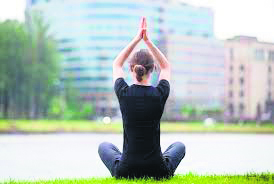


An often-overlooked aspect of yoga is the role of nutrition, specifically iron levels. Lower-than-normal levels of iron content or hemoglobin in the blood leads to anemia. Nearly 1.62 billion people worldwide suffer from anemia. According to the World Health Organization (WHO), India bears the highest prevalence of anemia, particularly among women. The standard levels of iron content or hemoglobin in the blood are 13.5 grams/100 ml for men and 12.0 grams/100 ml for women, and anything below these thresholds results in anemia.
Iron deficiency can have profound effects on the body, including low hemoglobin, shortness of breath, muscle weakness and cramps, and cold sensitivity. This can lead to soreness which hinders the benefits of yogic practice.
Low Hemoglobin:
=Hemoglobin is responsible for carrying oxygen from the lungs to the body.
=Low hemoglobin results in compromised oxygen delivery to muscles and this can lead to soreness.
=In yoga, increased oxygen supply is required for various postures and movements.
Muscle Weakness and Cramps:
=Iron is essential for myoglobin production in muscles.
=Low iron levels lead to decreased myoglobin, affecting oxygen storage in muscles.
=Results in muscle weakness and soreness during yoga poses.
=Cramps can interrupt the flow of the yoga practice and cause discomfort.
Cold Sensitivity:
=Insufficient iron levels lead to increased sensitivity to cold.
=Cold muscles are more prone to injury and soreness during yoga.
Iron deficiency significantly impacts the yoga experience. Hence, adequate iron levels are essential for a fulfilling yoga practice.
Tips to Increase Iron Intake:
=Start your day with one or two glasses of warm water with lemon juice and two teaspoons of honey on an empty stomach. Honey is rich in iron, manganese, and copper, making it ideal for those with anemia.
=Include freshly prepared beet juice, spinach juice, or carrot juice in your daily routine.
=Incorporate fruits rich in iron into your diet such as dates, apple, orange, papaya, black grapes, strawberries, melon, musk melon and guava. Aim for 2 fresh fruits daily.
=Consume black sesame seeds soaked in warm water, mixed with one cup of warm milk, honey, or jaggery.
Maintaining adequate iron levels through a balanced diet, including iron-rich foods can help support general health and enhance the yoga experience by reducing muscle soreness and promoting efficient recovery. This will ensure that your yoga practice is safe and pleasant.
The author is the Director of The Yoga Institute.